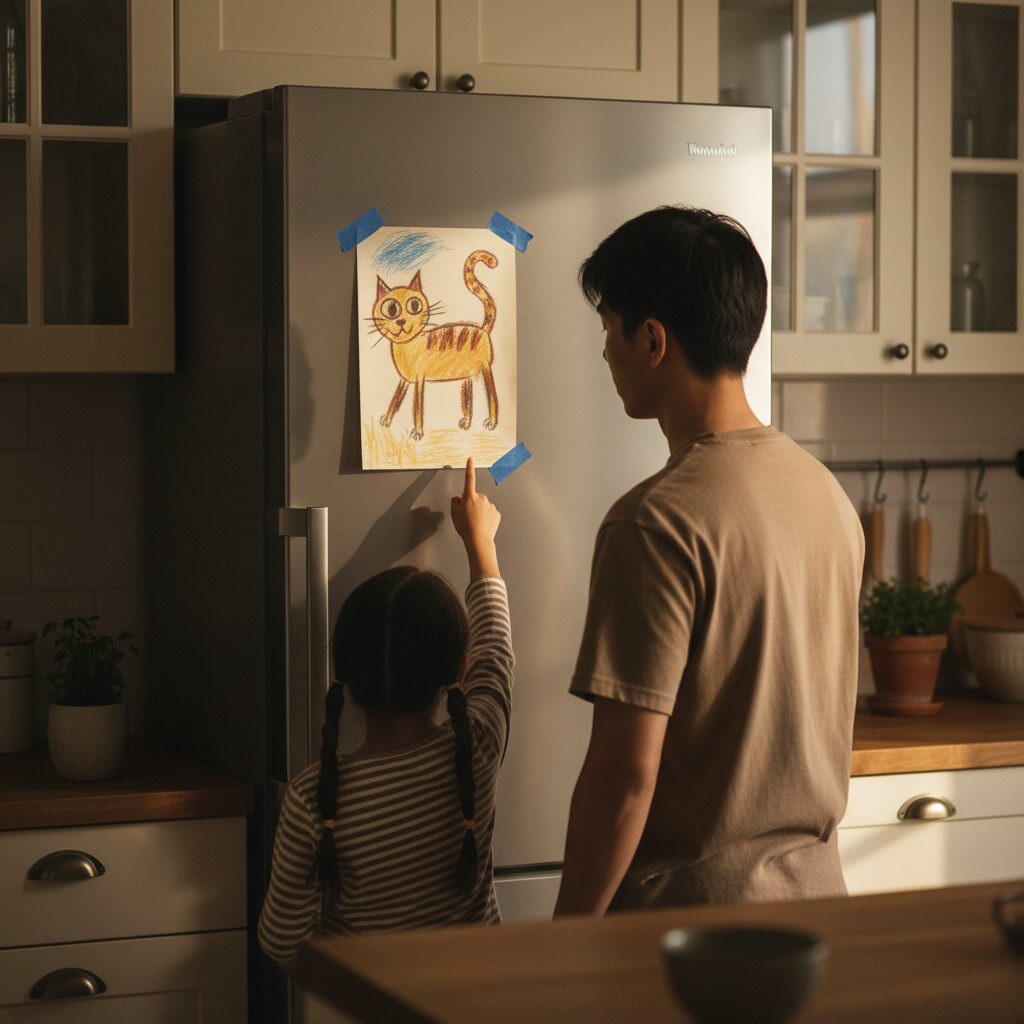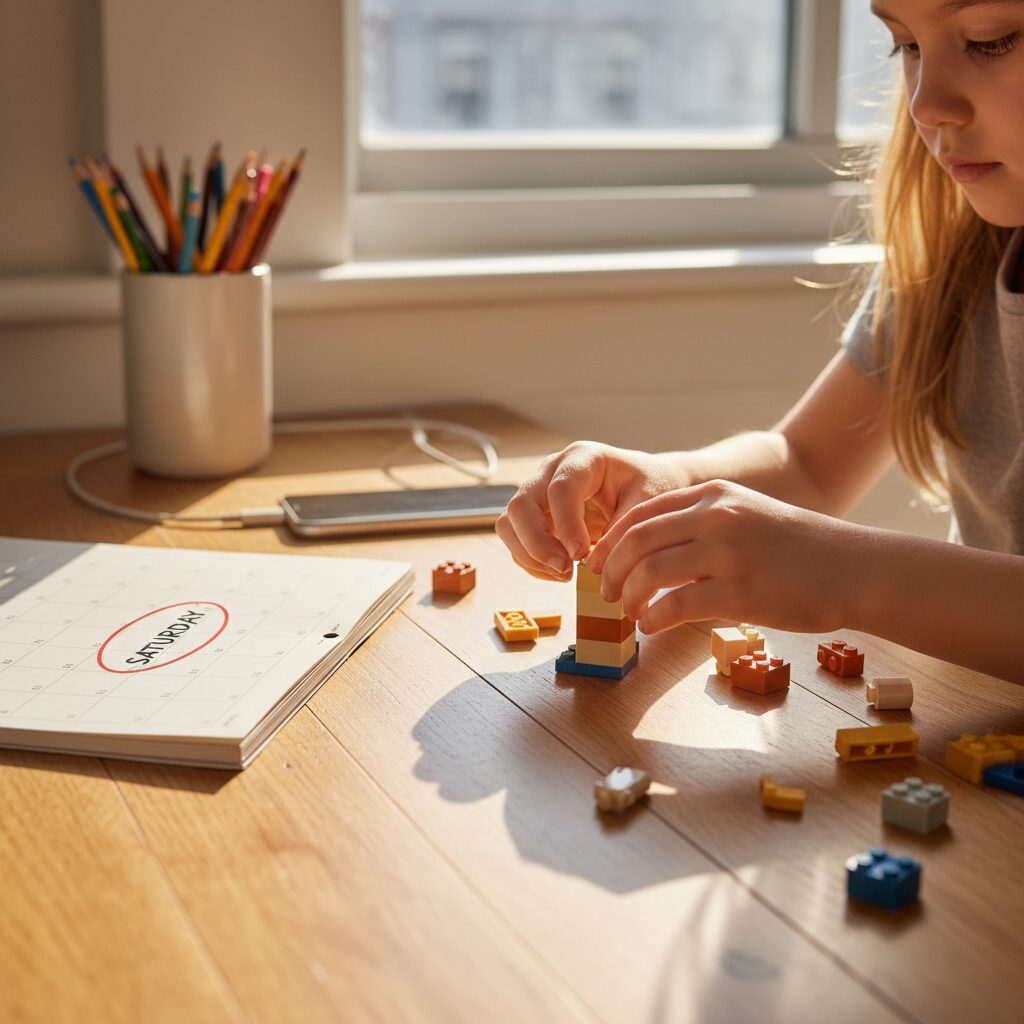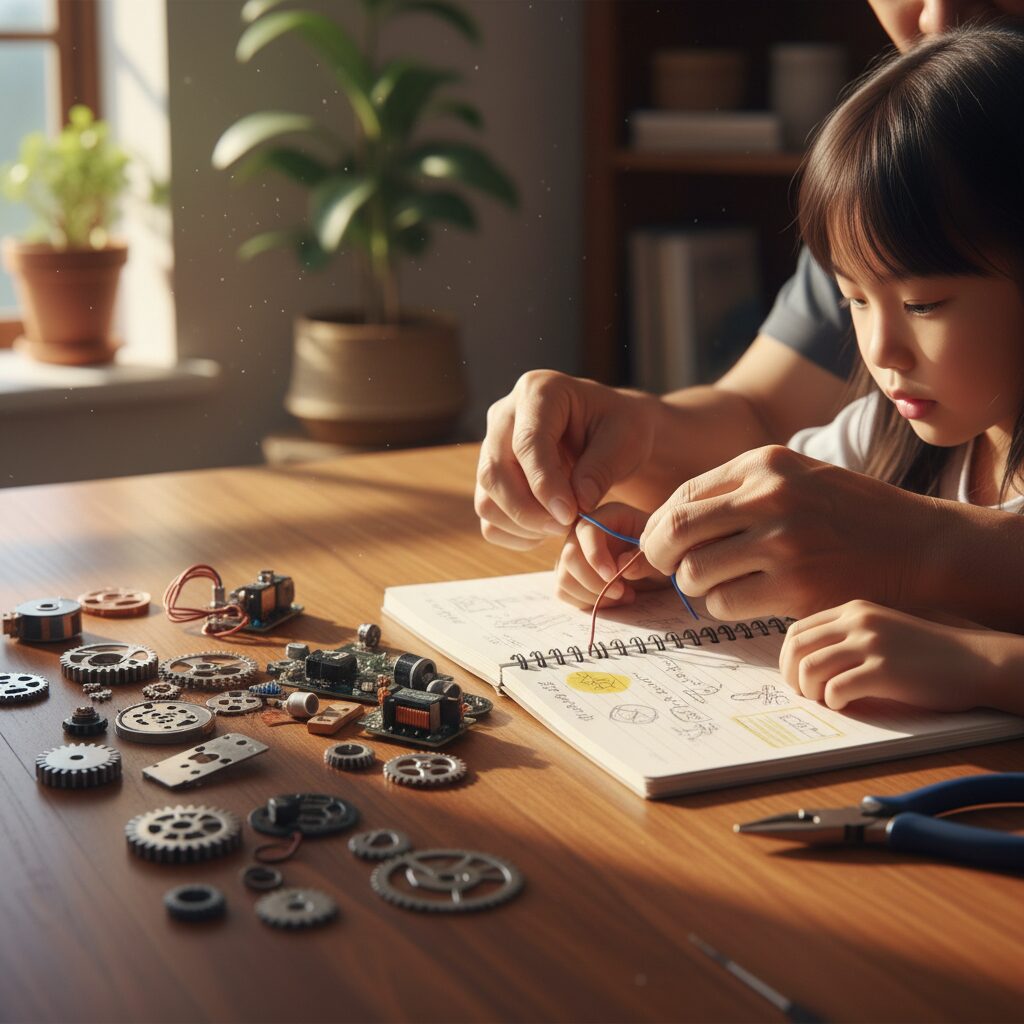
Want Future-Ready Kids? Let Silicon Valley’s AI Teach You
What if Google and Microsoft’s AI strategies could rewrite bedtime stories into future-proofing adventures? That scribbled three-legged cat drawing? It might hold more leadership wisdom than corporate retreats. Silicon Valley’s hard-won AI lessons are actually parenting lifelines for today’s chaotic reality.
How Do You Shield Creativity Like Tech Giants Protect AI?

Tech leaders learned the hard way: breakthrough ideas need protection from daily routines. When experts urged shielding AI teams from bureaucracy (USA Today), I couldn’t stop laughing about guarding Saturday LEGO marathons from calendar wars. Just like tech teams guarding creative time, we now shield Saturday LEGO marathons against calendar invasions! Innovation – whether in startups or sandboxes – thrives behind breathable shields against ‘practicality’ pressure.
Why AI parenting protects wild play: That determined tower-building after homework breakdowns? Think of it as their top-secret R&D lab – messy but world-changing! Last Tuesday’s sidewalk chalk explosion? We left the groceries in the car – because volcanoes erupt on THEIR schedule, not ours. Not through hovering, but by saying “Yes!” to spontaneous sidewalk art moments when chores pressure says otherwise.
What Makes Curiosity Stick? Lessons From AI Evolution

AI-native startups don’t just adopt technology – they integrate it into every function (Microsoft WorkLab). When curiosity becomes second nature, kids naturally ask brilliant questions – no training wheels needed! They ask better ‘why’ questions than most corporate strategy meetings while chasing snails during drizzle-filled walks.
Parenting success factor: Make wonder your default mode. Try this human-AI parallel: While executives struggle to remake business processes, children arrive pre-programmed with curiosity. Questions aren’t interruptions – they’re neural network upgrades. Try simple ideas to fuel this everyday magic through middle school’s tougher seasons.
- Observe tech’s 24/7 innovation rhythm
- Notice how toddlers question everything
- Match both mindsets through actionable play
Why Embracing Failure Builds Tomorrow’s Innovators

McKinsey’s research shows AI’s real challenge isn’t hardware but rewiring thinking (McKinsey Report). Similarly, preparing children means welcoming mess-ups – like robotics failures before show-and-tell. That’s not embarrassment, it’s PhD-level resilience practice.
Businesses succeed introducing human-AI collaboration, and we can mirror this through play. Try this practical list for compassionate learning:
- Construct hybrid forts: wooden blocks + coding apps
- Scenario-play modern problems: Should dragons have Wi-Fi in smart caves?
- Balance screen time with strategy discussions
Ultimately, help kids lead at the intersection of tangible creativity and virtual capabilities – the same space where AI’s top executives work.
How Companies and Parents Nurture Readiness
Following companies working through AI creates striking parenting parallels – both require daring to preserve wonder within systems. The most successful organizations aren’t those with strongest processors, but most curiosity-friendly cultures. Same applies to childhood: those pillow forts become leadership training when we treat them as innovation spaces.
Three keys for raising breakthrough thinkers:
- Recognize innate innovation potential
- Substitute preschool pressure with meaningful play
- Replace performance anxiety with curiosity-driven AI
Tomorrow’s AI pioneers won’t emerge from sterile labs, but from homes where family routines defend those messier ‘why toast can’t fly’ experiments with the same fierce love that guards childhood’s messy miracles. Innovation survives where play meets purpose.
